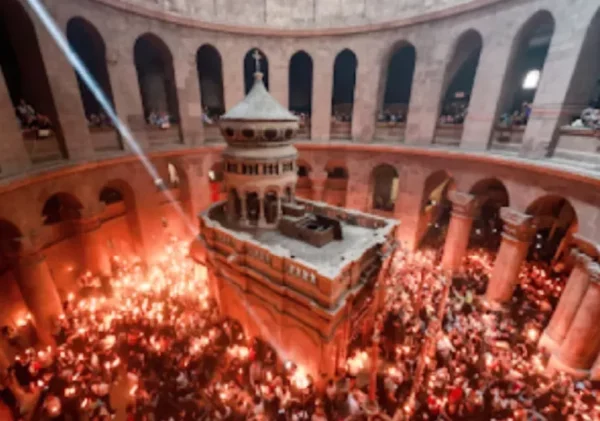The Stations of the Cross: A Journey of Reflection and Faith

SHARE
The Stations of the Cross, also known as the Way of the Cross or Via Crucis, is a devotional practice in Christianity that commemorates the journey of Jesus Christ from his condemnation to his crucifixion and burial. This spiritual exercise typically consists of 14 stations, each representing a specific event along the path Jesus walked on his way to Calvary. While the traditional Stations of the Cross comprise 14 stations, some variations include only 12 stations.
In this article, we will explore the 12 stations of the cross and their significance in the Christian faith.
1. Jesus is Condemned to Death
This station marks the beginning of Jesus’ journey to the cross. Pilate, the Roman governor, succumbs to the pressure of the crowd and condemns Jesus to death, despite finding no fault in him. This station reminds believers of Jesus’ innocence and the unjust condemnation he endured for the salvation of humanity.
2. Jesus Takes Up His Cross
In this station, Jesus willingly accepts the heavy burden of the cross, symbolizing his obedience to the will of God and his determination to fulfill his mission of redemption. By carrying the cross, Jesus demonstrates his solidarity with humanity in bearing the weight of sin.
3. Jesus Falls the First Time
As Jesus carries the cross, weakened by physical and emotional exhaustion, he stumbles and falls under its weight. This station represents Jesus’ humanity and his vulnerability to suffering. It serves as a reminder of the trials and challenges that individuals may face in their own lives.
4. Jesus Meets His Mother, Mary
On his journey to Calvary, Jesus encounters his mother, Mary, who witnesses his suffering with profound sorrow and love. This station highlights the compassion and empathy shared between Jesus and his mother and underscores the importance of familial bonds and support during times of adversity.
5. Simon of Cyrene Helps Jesus Carry the Cross
Unable to bear the weight of the cross alone, Jesus receives assistance from Simon of Cyrene, who is compelled by Roman soldiers to carry the cross alongside him. This station illustrates the significance of community and the willingness to help others in their times of need.
6. Veronica Wipes the Face of Jesus
Moved by compassion, Veronica approaches Jesus and wipes his face with a cloth, offering him comfort and solace amidst his suffering. According to tradition, an image of Jesus’ face is miraculously imprinted on the cloth. This station symbolizes acts of kindness and mercy extended to those who are suffering.
7. Jesus Falls the Second Time
Despite his determination, Jesus falls under the weight of the cross for the second time. This station emphasizes Jesus’ perseverance in the face of adversity and his willingness to endure suffering for the sake of humanity’s salvation.
8. Jesus Meets the Women of Jerusalem
As Jesus continues his journey, he encounters a group of women who mourn and lament his impending crucifixion. Jesus speaks to them, urging them not to weep for him but for themselves and their children. This station highlights Jesus’ compassion for those who mourn and his concern for the welfare of others.
9. Jesus Falls the Third Time
In his weakened state, Jesus falls to the ground for the third time, nearing the point of exhaustion. This station symbolizes the culmination of Jesus’ physical and spiritual anguish as he approaches the climax of his redemptive sacrifice.
10. Jesus is Stripped of His Garments
Upon reaching Calvary, Jesus is stripped of his clothing by Roman soldiers, who divide his garments among themselves. This station symbolizes the humiliation and degradation inflicted upon Jesus in his final moments and underscores his vulnerability and selflessness.
11. Jesus is Nailed to the Cross
In a harrowing act of cruelty, Jesus is nailed to the cross, his hands and feet pierced by nails. This station represents the culmination of Jesus’ sacrificial offering and the ultimate expression of his love for humanity, as he willingly lays down his life for the forgiveness of sins.
12. Jesus Dies on the Cross
At the twelfth station, Jesus breathes his last breath and surrenders his spirit to God. His death on the cross signifies the completion of his redemptive mission and the victory over sin and death. This station invites believers to contemplate the profound significance of Jesus’ sacrifice and to find hope and salvation in his resurrection.
The Stations of the Cross offer a powerful opportunity for believers to reflect on the passion and sacrifice of Jesus Christ and to deepen their understanding of the Christian faith. Through prayer, meditation, and contemplation of each station, individuals are invited to walk alongside Jesus on his journey to the cross and to experience the transformative power of his love and mercy.
*Cover Photo/Thumbnail Photo: Freepik
RELATED ARTICLES

Business is in the Red? Here’s How a Christian Should Respond

Holy Fire Ignites Faith as Thousands Unite in Jerusalem









